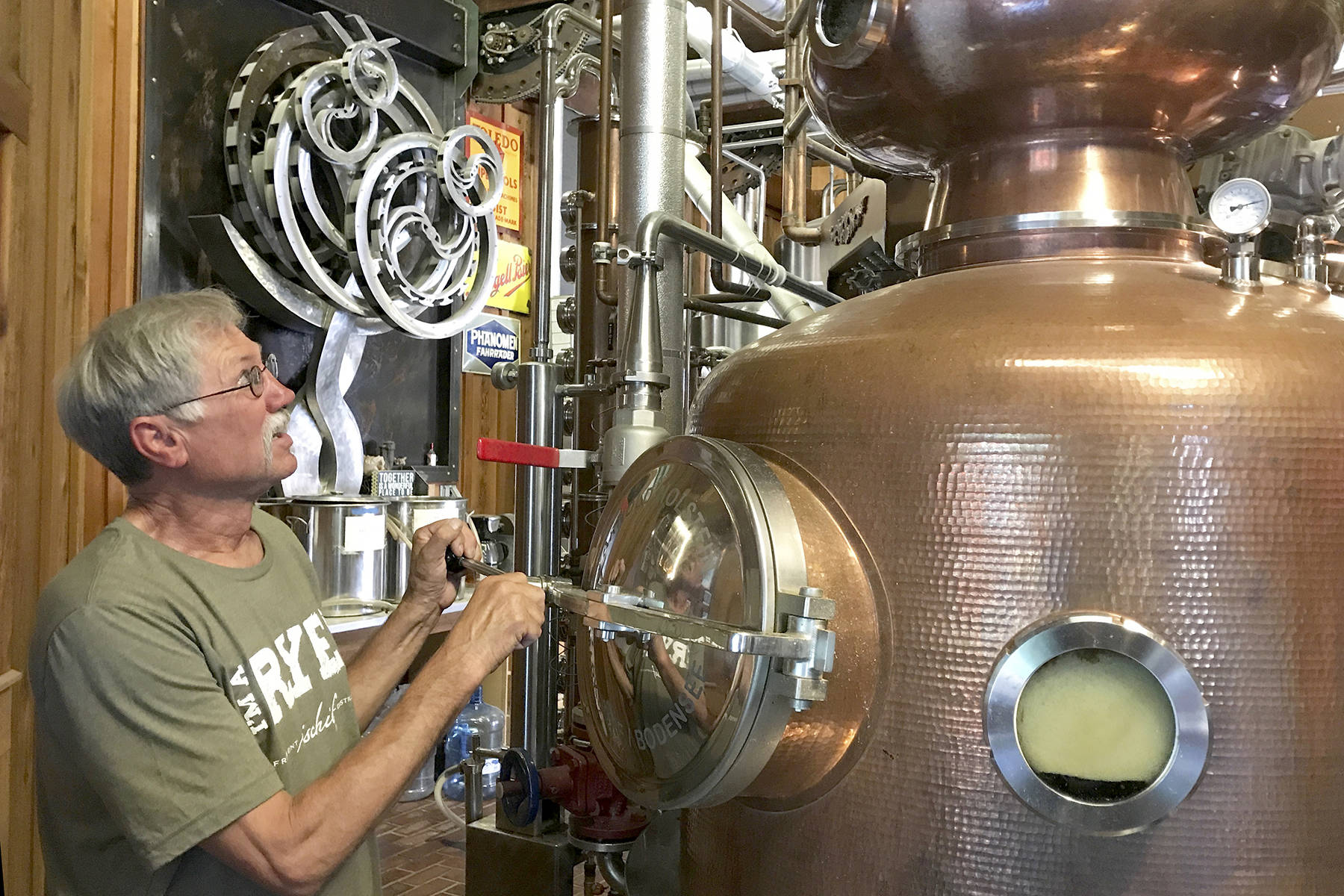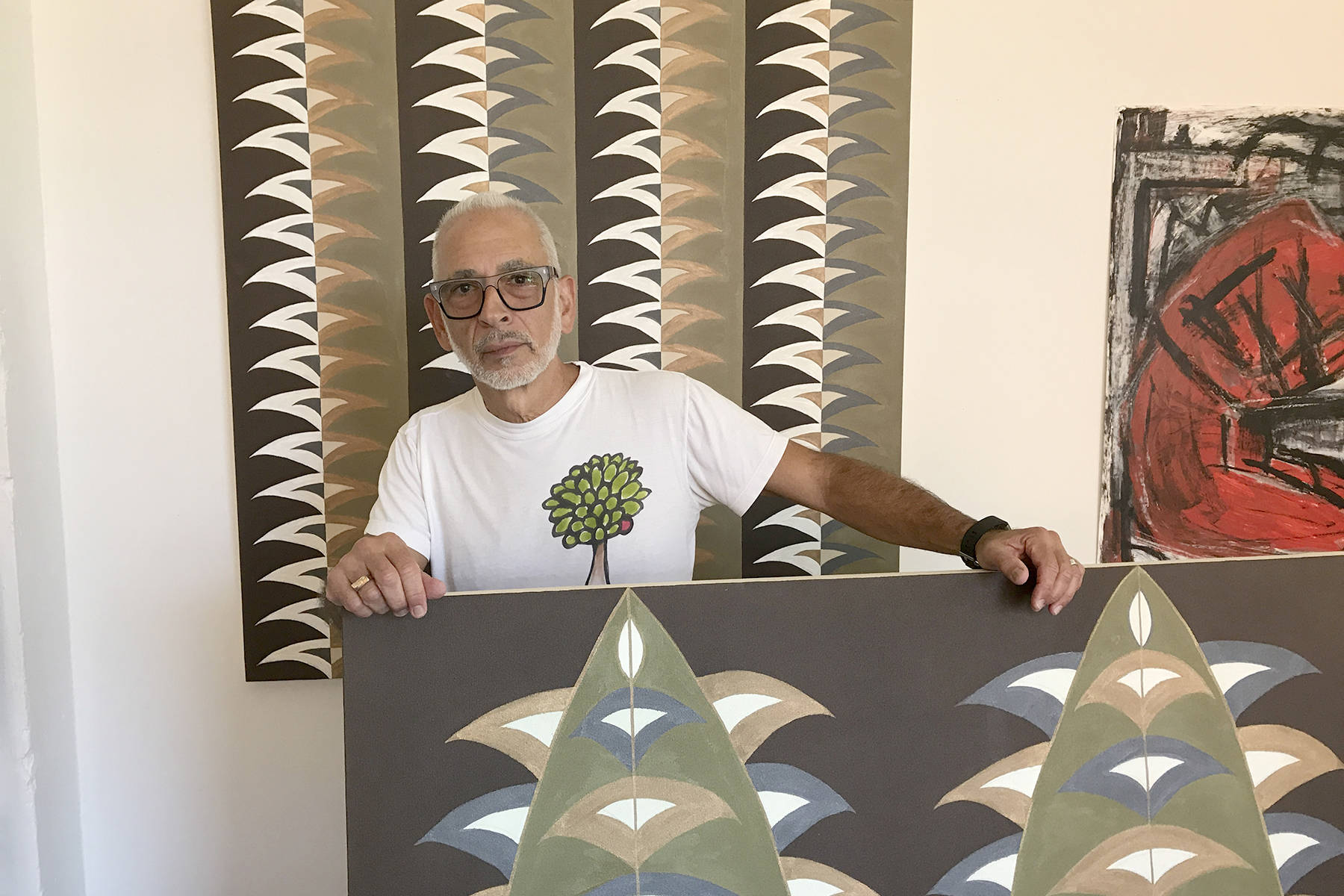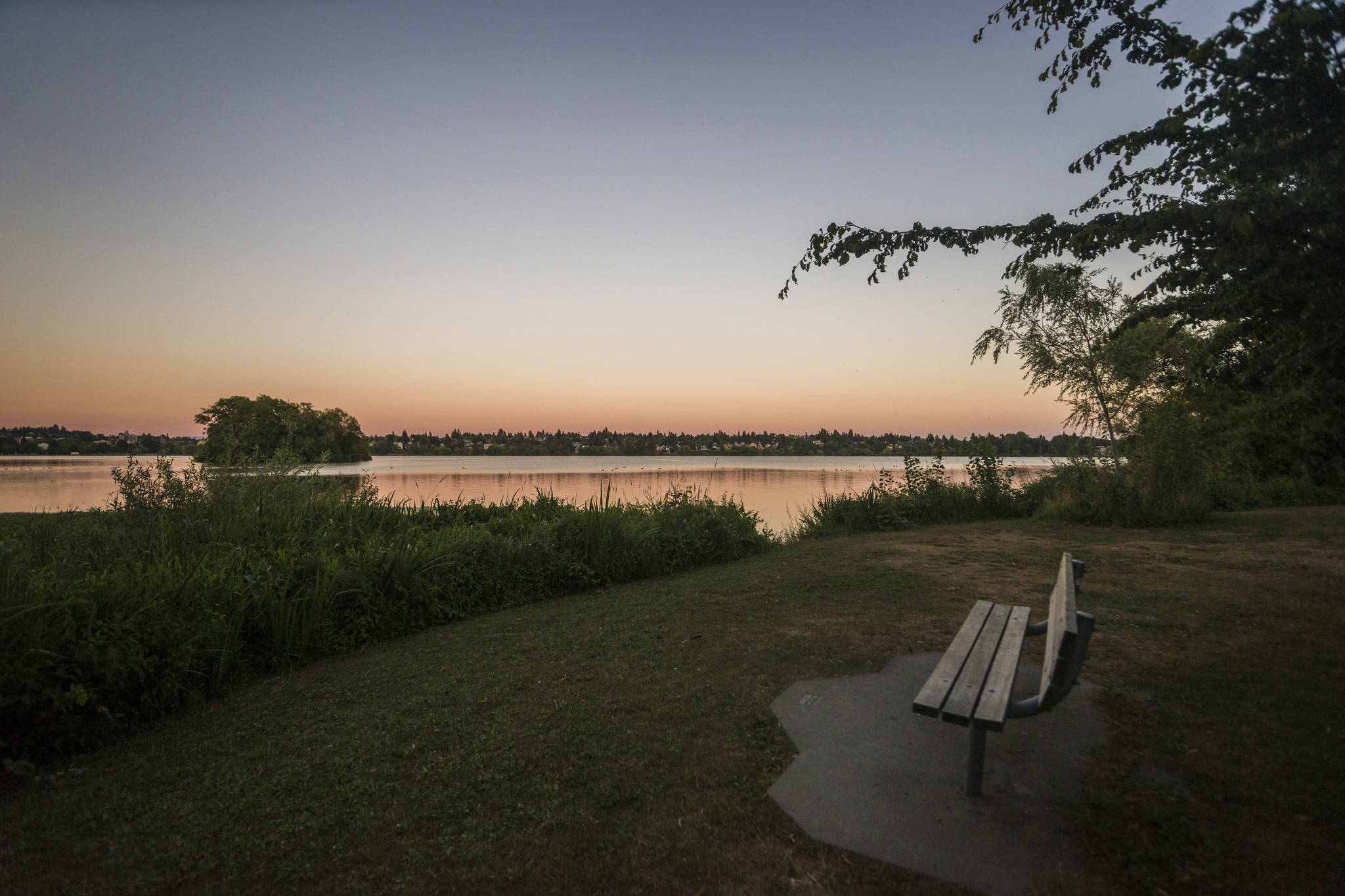Before he opened Fremont Mischief Distillery, Mike Sherlock built a thriving shipyard business on Lake Union by saying “Yes.”
Cut a boat in half and lengthen it? Sure! Design and build an on-board factory for processing fish? No sweat.
Sherlock, 61, the son of a welder on Whidbey Island, started a ship-repair business in 1981. It grew from a one-man operation to 300 employees before he sold it in 2008. Sherlock loved a challenge. He didn’t know it at the time, but he was laying the groundwork for a second career in distilling. Tired of working long hours and holidays (ships like to set sail right after Christmas), Sherlock and his wife, Patti Bishop, a successful software entrepreneur, left their companies to open Washington’s fourth distillery in 2009, a year after the legislature passed a law allowing such operations in the state for the first time since before Prohibition.
The new business gave Sherlock a chance to express his aesthetic and technical creativity. “Everything here is working art,” says Sherlock walking among copper and steel tanks adorned with vintage metal-framed, submarine-style round windows that you half-expect to see Jacques Cousteau peering back through. Indeed, even the drain panels at Fremont Mischief have a steampunk flourish. But the distillery’s unique look isn’t just for style. “These are the only stills in the world with wizard caps,” Sherlock says, referring to the stills’ conical tops. These, plus other modifications borrowed from the fish-processing facilities Sherlock used to build, allow the spirits to attain a higher proof much more quickly. “When you see vodka that says it’s three or five times distilled, that’s not because it makes a better vodka,” Sherlock explains. “It’s because it’s necessary to reach a high-enough proof. For us, it only takes one run.”
The result is a vodka smooth enough that, rather than being mixed in cocktails, is poured straight in Mischief’s tasting room. Vodka is relatively new to the distillery (as is gin), which has focused on rye since its beginning. In fact, it’s the only variety of whiskey produced at the distillery—notable since most distilleries don’t make a rye. Mischief makes four, which win it a ton of awards, including a gold medal from the American Distilling Institute for the Dark Northern Reserve.
Sherlock’s affinity for rye stems from partnerships with local farmers willing to take on the difficult crop, which is essentially a weed that kills other crops if not grown skillfully. From the outset, Mischief has sourced rye and barley (both ingredients in rye) from farmers across the Pacific Northwest. “The Skagit Valley has some of the richest soil in the world,” says Sherlock, who attributes some of his whiskey’s character to the rye grown here. Photos of the farmers and their fields adorn the walls of Mischief’s courtyard.
Visitors to the canal-adjacent Fremont distillery, covered in turn-of-the-century maritime-style painting by local artist Jill Carter, are likely unaware of a variety of green innovations going on behind the scenes. Again drawing on Sherlock’s experience in the shipyard, Mischief is equipped with a water-recycling system that enables the distillery to draw only 170 gallons from the city daily, even though it uses at least 3,000 total gallons each day. Other tricks employed by Sherlock are almost laughably simple. For instance, the distiller noticed that the large containers holding the distillery’s used mash held a temperature of over 100 degrees for several days. He realized he could put a fan on the containers as they awaited shipment to a farm for cow feed and heat the warehouse.
As passionate as Sherlock is about the mechanical elements of his distillery, he bursts into huge smiles talking about the spirits themselves. The two varieties of Storm Tossed Rye make for a revealing taste test. Though wildly different in character, their only difference is that they are aged in barrels on different shipping vessels. They were made as part of a charity fundraiser with the captains from Discovery Channel’s Deadliest Catch, one of the distillery’s many philanthropic initiatives.
“What’s fun is thinking up something and then actually doing it,” Sherlock says. This seems to be the motto that guides Fremont Mischief. In the shipyard, Sherlock welcomed unusual requests. He now requests the unusual of himself. Sherlock’s latest mission is to put Fremont Mischief on the map of the neighborhood’s oddities. The distiller is a huge fan of the troll sculpture, the Lenin statue, and the Fremont Rocket. He plans to join the party by adding a 24-foot blimp to the roof of the distillery’s tasting room.
food@seattleweekly.com







